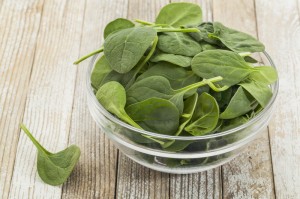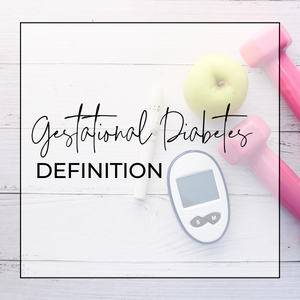 If you’ve read anything at all on nutrition during pregnancy, you probably know that folic acid and pregnancy go hand in hand. Folate (or folic acid) is actually one of the B vitamins, B9 to be exact. Folate is the form of the vitamin found naturally in foods, whereas folic acid is found in supplements. A lack of folate/folic acid during pregnancy (approximately 3-4 weeks after conception) has been associated with birth defects and neural tube defects, such as spina bifida. Unfortunately, neural tube defects can occur even before a woman realizes that she’s pregnant.
If you’ve read anything at all on nutrition during pregnancy, you probably know that folic acid and pregnancy go hand in hand. Folate (or folic acid) is actually one of the B vitamins, B9 to be exact. Folate is the form of the vitamin found naturally in foods, whereas folic acid is found in supplements. A lack of folate/folic acid during pregnancy (approximately 3-4 weeks after conception) has been associated with birth defects and neural tube defects, such as spina bifida. Unfortunately, neural tube defects can occur even before a woman realizes that she’s pregnant.
The American Congress of Obstetricians and Gynecologists recommends that all pregnant and women who may become pregnant take a daily vitamin supplement that contains the right amount of folic acid. ACOG recommends at least 400 micrograms of folic acid 1 month prior to conception and 600 micrograms during pregnancy. The US Department of Health and Human Services recommends 400-800 micrograms per day for pregnant women or those planning on becoming pregnant. The US Department Health and Human Services has put together a great fact sheet on folic acid. Some women need more folic acid than others. Talk to your ob/gyn about your specific folic acid needs.
Other than the source, is there a difference between folate and folic acid? Um..Yes! Folic acid is more bioavailable than folate. This means that if the same amount (# micrograms) is consumed, more of the vitamin from folic acid will be available for our bodies to use.
Dietary Sources of Folate
Folate occurs naturally in the following foods:
- Dark-green, leafy vegetables (like spinach and broccoli)
- Dried beans and peas (legumes)
- Orange juice and other citrus fruits/juices
Some foods have also been fortified with folic acid:
- Cereals
- Enriched breads
- Pastas
- Rice
Adding dark-green, leafy vegetables to your diet not only provides folate but also adds other vitamins and minerals too. One ideas for adding dark-green leafy vegetables to your diet is to make a big salad for lunch or dinner and top it with other colorful veggies and a lean protein. Another idea is to make a smoothie and add a handful of spinach to it.
What other ideas can you come up with to add a little folate to your diet? Let me know in the comments section!
Image credit: Can Stock Photo





I had a miscarriage a few months ago. My husband are thinking about trying again so I have been on the hunt for ways to fill my body with nutrition. I am so glad I met you at BlogHer because your website is going to be super helpful to me. I like smoothies and salads. I was amazed at how nutritious spinach is when i started reading the labels. I try to eat some everyday now.
Hi Lillian! It was great meeting you too!
I’m so sorry to hear about your miscarriage. This blog is a very new venture for me, and I have lots of learning to do. But, I’m hoping that there will be some great information for you here as I continue to get it set up!